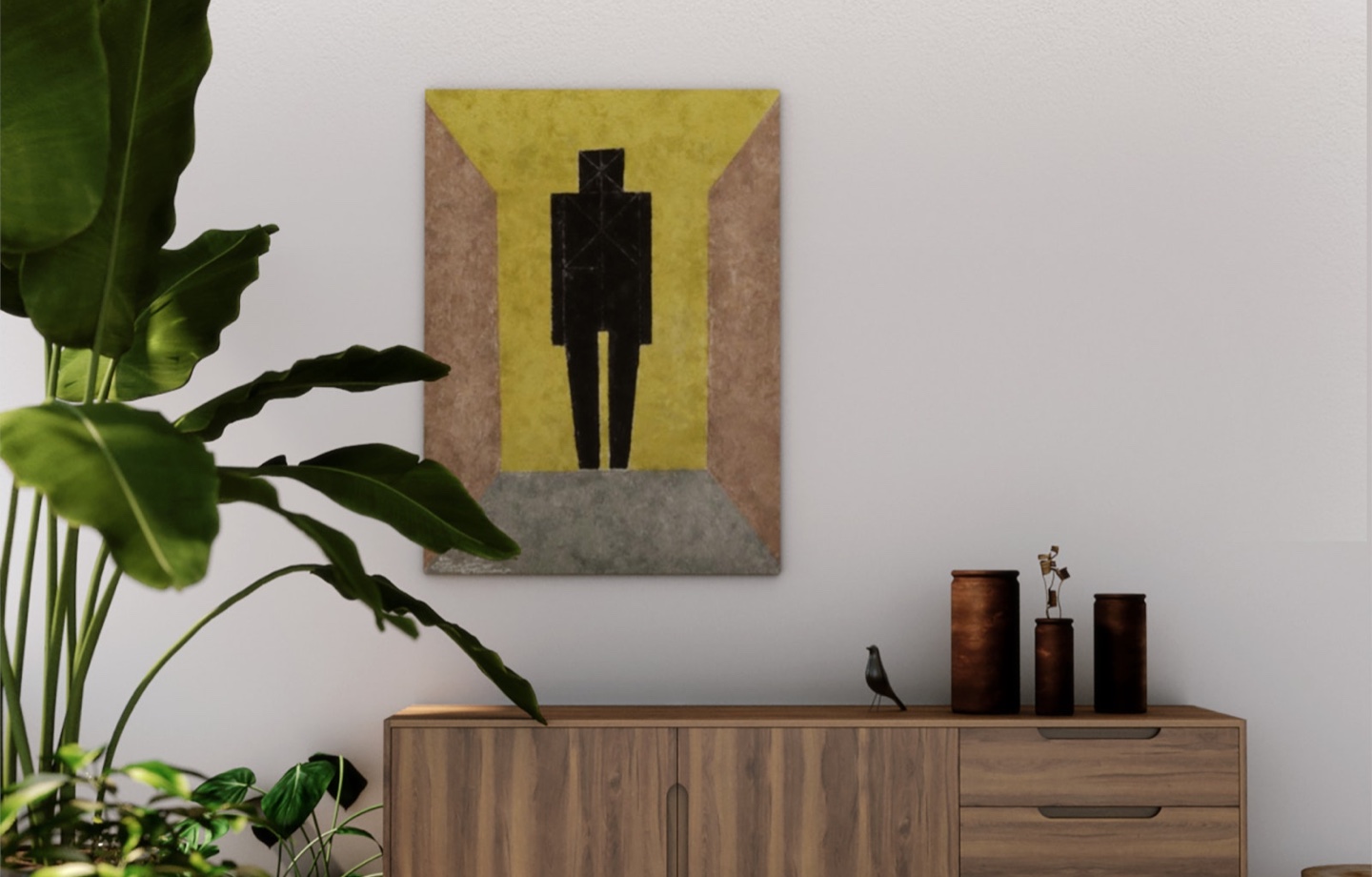Plants are more than nice to look at — they also help remove indoor pollution that impacts overall well-being. Here are 10 beginner-friendly, low-maintenance houseplants we love.
Before I moved to Texas from California, I was a mom to 13 plants: a sprawling Monstera deliciosa, multiple snake plants, and other natural beauties. When it was time to road trip across several state lines, friends adopted them all, except for two favorites I buckled in my car. Let’s just say the journey was tough on them, and I regretfully neglected to revive them while settling into a new place and working remotely.
As a homebody with no more green girls to take care of, I’m eager to buy new plants to freshen up my space. Whether at home, school, the office, the gym, or other interior spaces, Americans spend about 90 percent of their time indoors. Although being inside shields us from outdoor elements, our environments can house volatile organic compounds (VOCs) — or gasses emitted from solids and liquids — that can trigger health concerns. Everyday items like household cleaners, cosmetics, building and décor materials, craft supplies, appliances, and even non-organic mattresses, release these harmful chemicals into the air.
Read more: 12 Non-Toxic Replacements For Things You Use Every Day
The health risks vary from person to person, depending on their sensitivity, pollution level, and amount of exposure. Short-term exposure can irritate the eyes, nose, and throat and cause headaches, dizziness, and fatigue. If high exposure lasts for months or years, the U.S. Environmental Protection Agency says it’s possible to develop respiratory diseases, heart disease, and even cancer.
Poor ventilation, especially during colder months or wildfire season, can worsen conditions because there’s insufficient outdoor air to dilute or carry out pollution. You can utilize artificial ventilation and AC units, but your energy costs and carbon footprint will increase. Here’s where plants come in. Plants act as a secondary or supplemental option for naturally ridding your space of VOCs and other pollutants by absorbing airborne molecules.
More comprehensive research needs to be done in living environments instead of controlled lab settings. Still, a study that screened 95 research journals determined that indoor plants primarily help rid the air of formaldehyde, benzene, and toluene. The most efficient species? The Devil’s Ivy, Rubber Plant, and Snake Plant.
To lessen indoor VOC levels substantially, you’ll need to invest in a few walls worth of greenery, but having a family of plants can still lend a helping hand.
Here are 10 low-maintenance houseplants for cleaner air.
Read more: How to Improve Your Home’s Air Quality
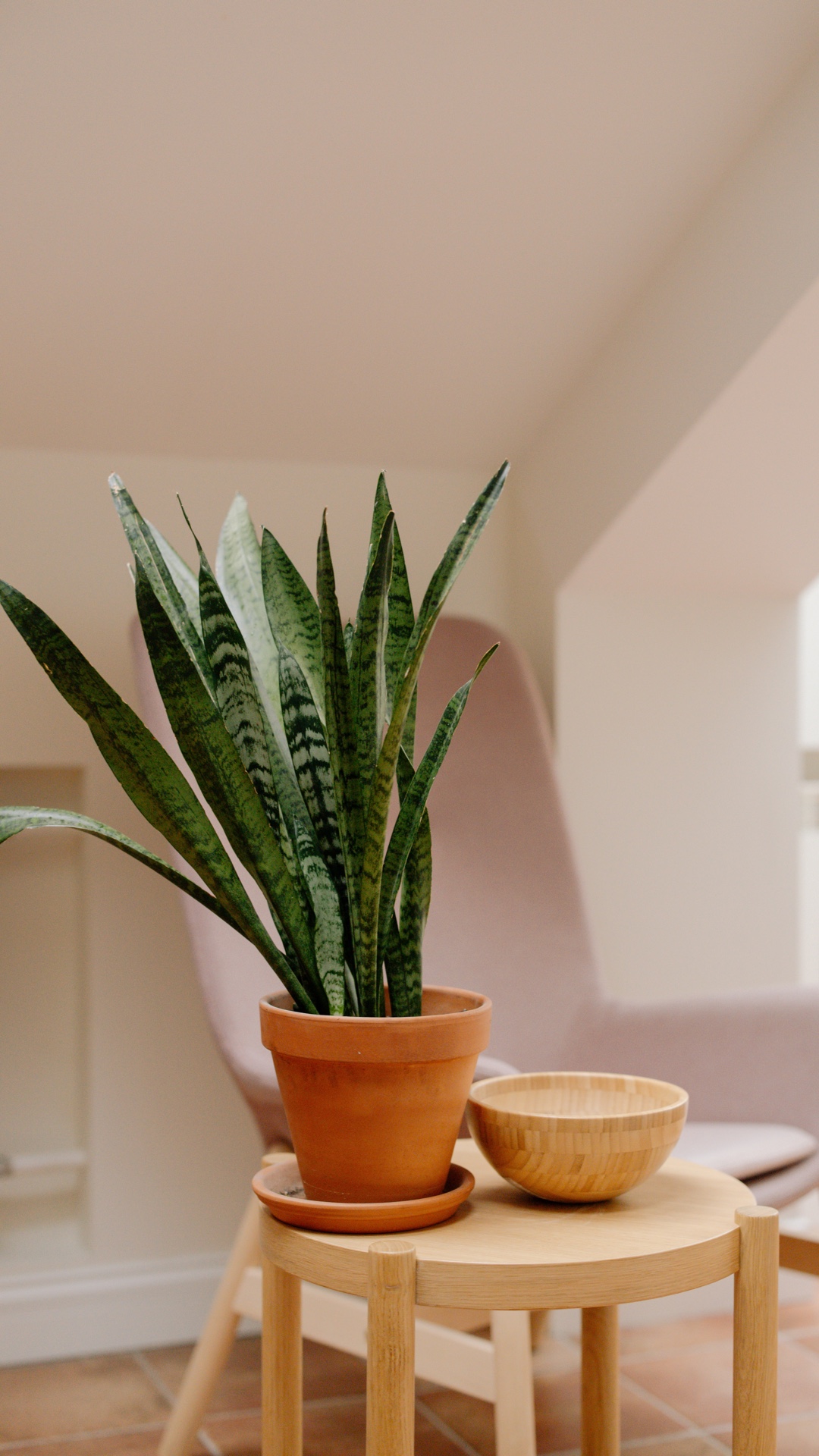 This sturdy plant species is what I like to call ol’ reliable. Snake plants are tough to kill if you don’t overwater them. Featuring stiff, yellow-accented green leaves, you can be pretty hands-off if you place it in indirect sunlight and water it every two weeks.
This sturdy plant species is what I like to call ol’ reliable. Snake plants are tough to kill if you don’t overwater them. Featuring stiff, yellow-accented green leaves, you can be pretty hands-off if you place it in indirect sunlight and water it every two weeks.
Helps remove: formaldehyde, benzene, xylene, trichloroethylene, and toluene
Toxic for pets? Yes
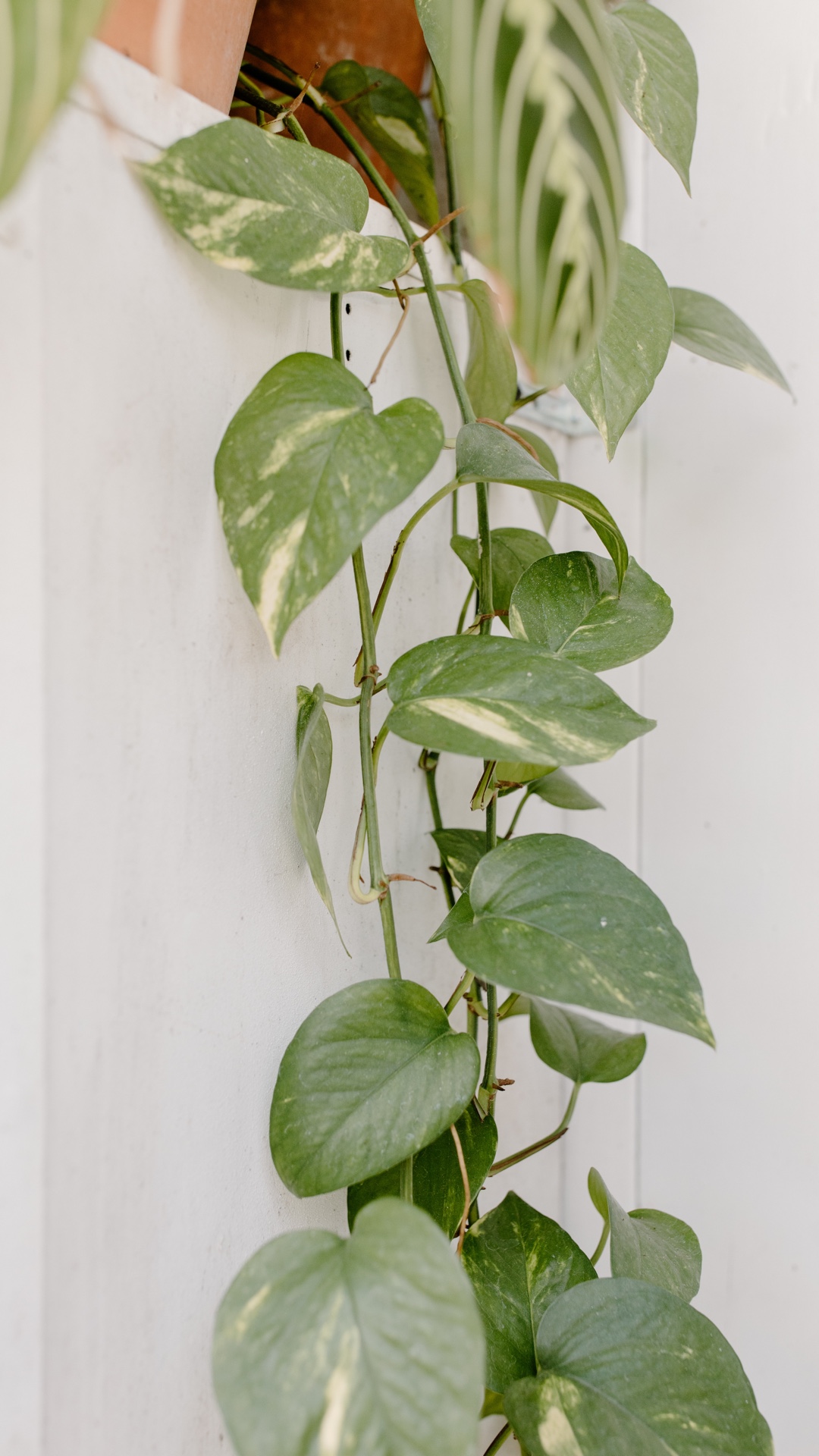 More commonly known as a Pothos, this resilient plant thrives in bright, indirect sunlight and should be watered when the soil is dry. A Devil’s Ivy can also stay alive in low lighting or artificial light, but it’ll slow the growth of its flowing leafy tendrils.
More commonly known as a Pothos, this resilient plant thrives in bright, indirect sunlight and should be watered when the soil is dry. A Devil’s Ivy can also stay alive in low lighting or artificial light, but it’ll slow the growth of its flowing leafy tendrils.
Helps remove: formaldehyde, benzene, xylene, toluene, and carbon monoxide
Toxic for pets? Yes
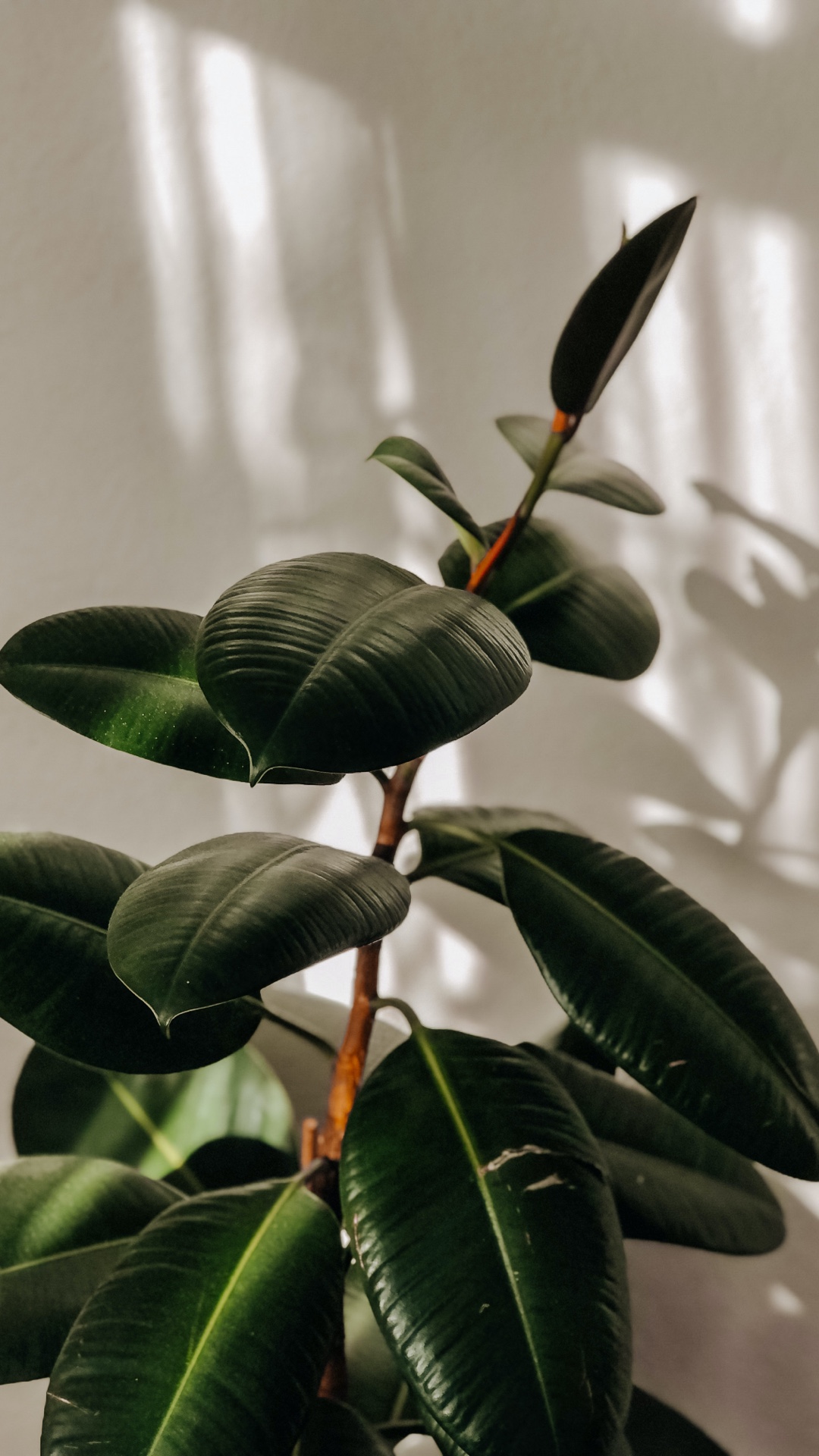 These glossy, deep green plants have hints of coral in their oval-shaped leaves and are a breeze to care for. Rubber plants, which can grow into tall trees, prefer medium to bright, indirect light and can be watered once a week or every two weeks when at least half of its soil is dry.
These glossy, deep green plants have hints of coral in their oval-shaped leaves and are a breeze to care for. Rubber plants, which can grow into tall trees, prefer medium to bright, indirect light and can be watered once a week or every two weeks when at least half of its soil is dry.
Helps remove: formaldehyde, carbon monoxide, and trichloroethylene
Toxic for pets? Yes
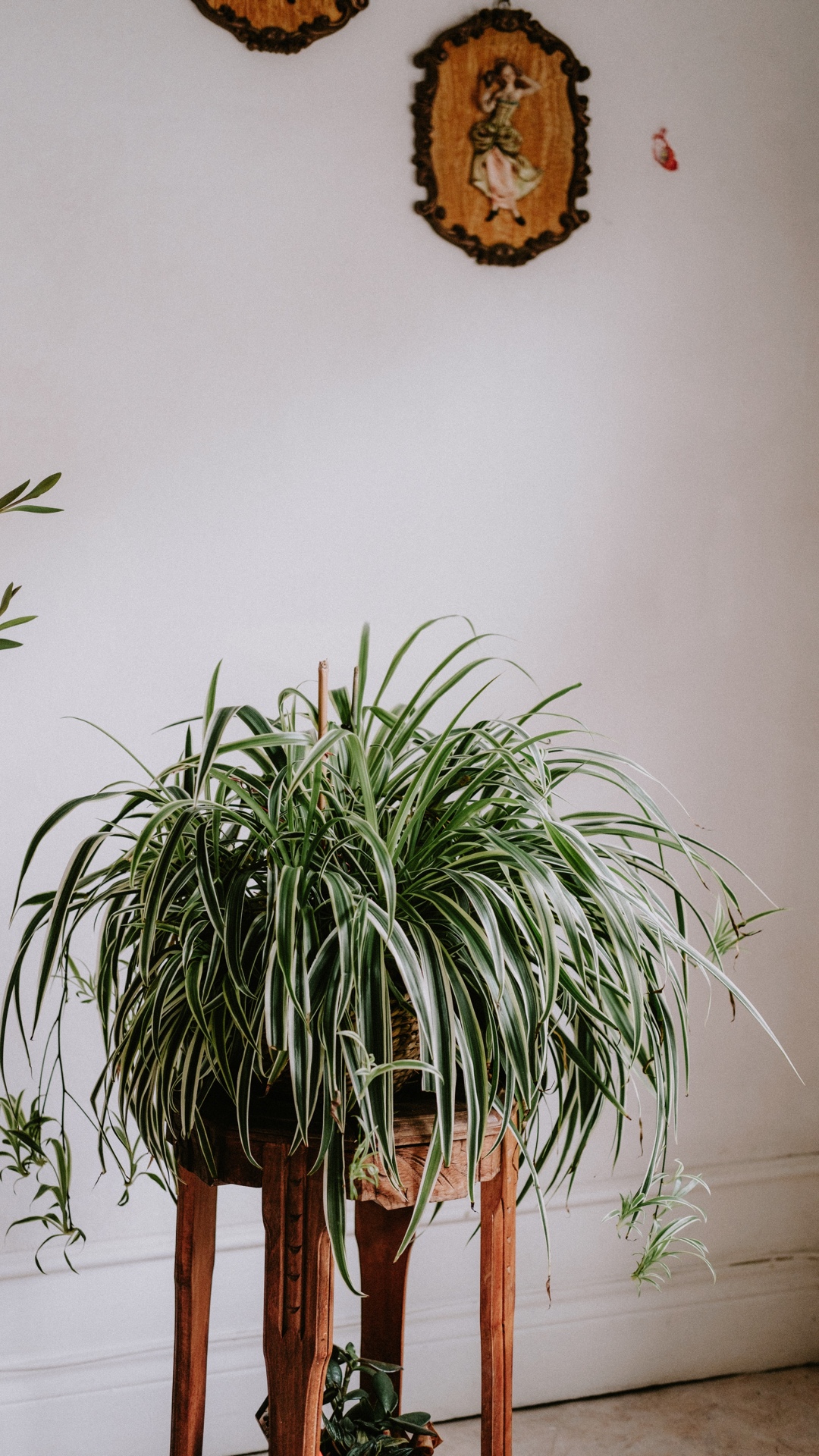 Green and white striped, this plant is fast-growing and can survive in light shade or indirect light. Spider plants like to have slightly moist soil and moderate misting of their leaves but avoid being heavy-handed with the water.
Green and white striped, this plant is fast-growing and can survive in light shade or indirect light. Spider plants like to have slightly moist soil and moderate misting of their leaves but avoid being heavy-handed with the water.
Helps remove: formaldehyde and xylene
Toxic for pets? No
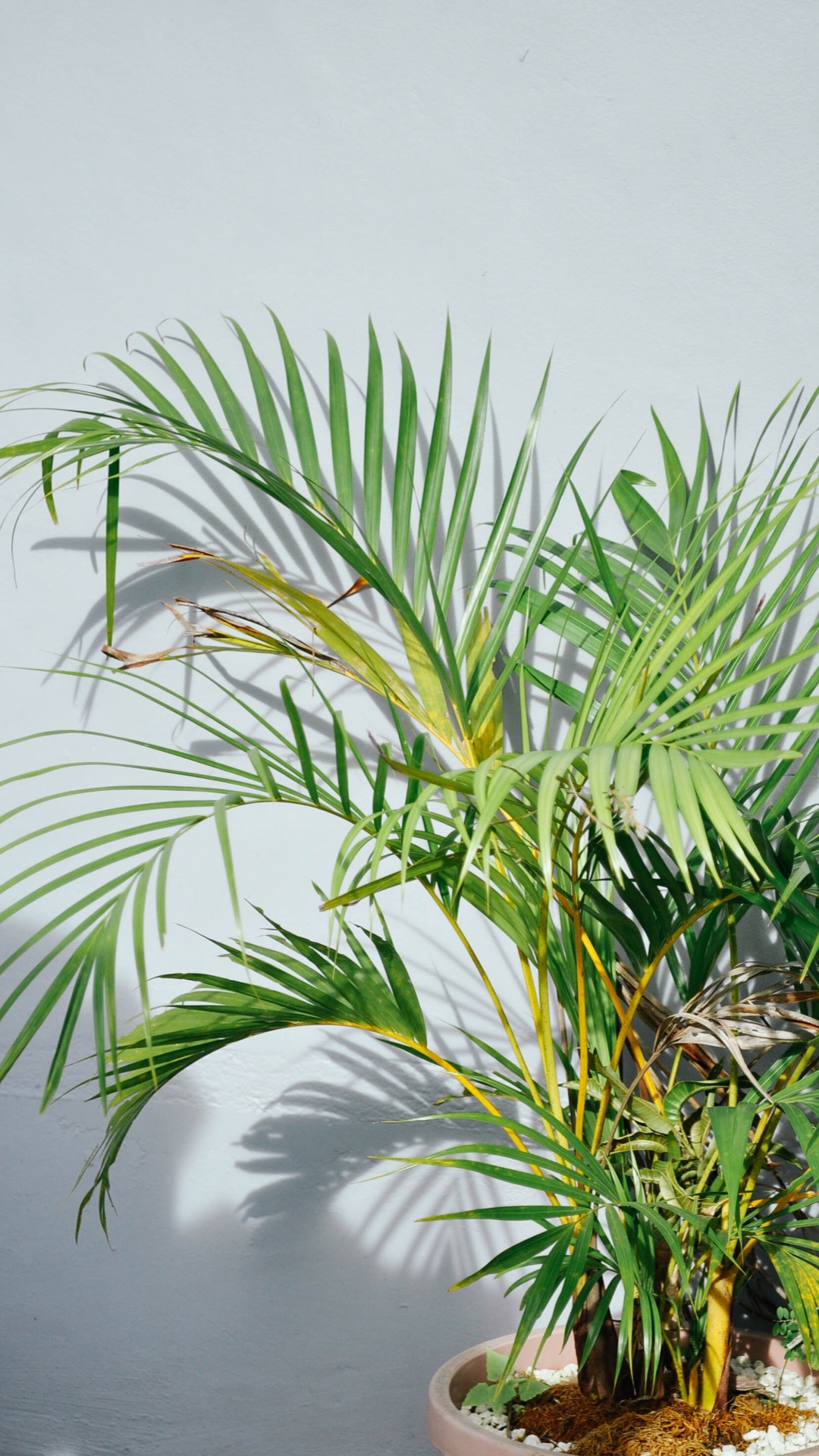 A bamboo palm tree is great for beginners that want a plant that takes up space. This tall and lush plant can thrive in indirect sunlight and — compared to its tropical cousins that require direct light and humid conditions — will be okay in shady areas. Evenly water your bamboo palm whenever the surface of the soil feels dry.
A bamboo palm tree is great for beginners that want a plant that takes up space. This tall and lush plant can thrive in indirect sunlight and — compared to its tropical cousins that require direct light and humid conditions — will be okay in shady areas. Evenly water your bamboo palm whenever the surface of the soil feels dry.
Helps remove: formaldehyde, benzene, xylene, carbon monoxide, and chloroform
Toxic for pets? No
Read more: 9 Bedroom Plants That Help You Sleep
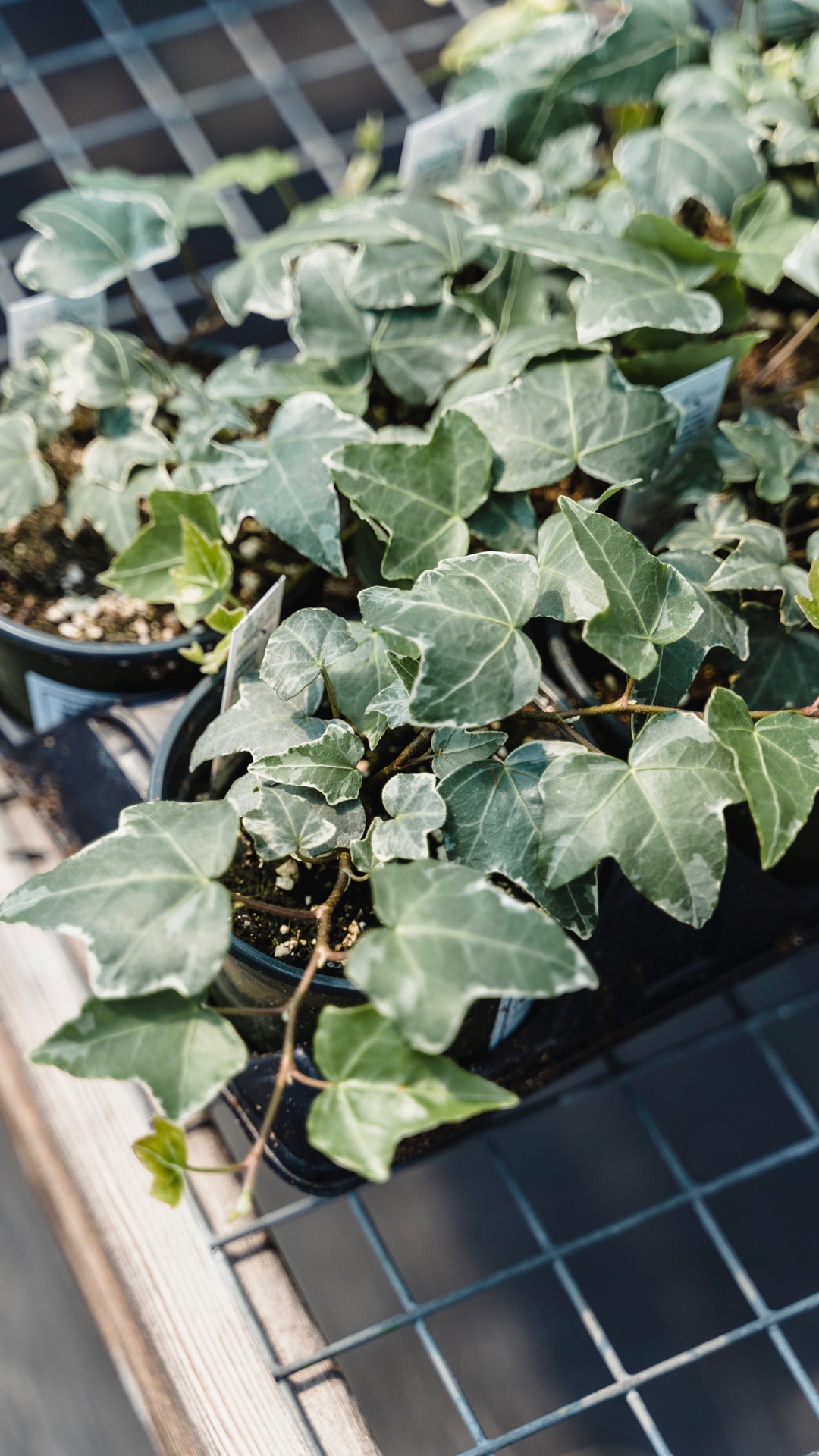 English Ivy is an aggressive outdoor plant known for dominating neighboring foliage and buildings. But as a potted houseplant, it can be tame and simple to care for. Its waxy leaves do best in bright or medium indirect light conditions. Ensure the soil is completely dry before each watering session, and give the vines space to cascade or climb.
English Ivy is an aggressive outdoor plant known for dominating neighboring foliage and buildings. But as a potted houseplant, it can be tame and simple to care for. Its waxy leaves do best in bright or medium indirect light conditions. Ensure the soil is completely dry before each watering session, and give the vines space to cascade or climb.
Helps remove: formaldehyde, benzene, carbon monoxide, and trichloroethylene
Toxic for pets? Yes
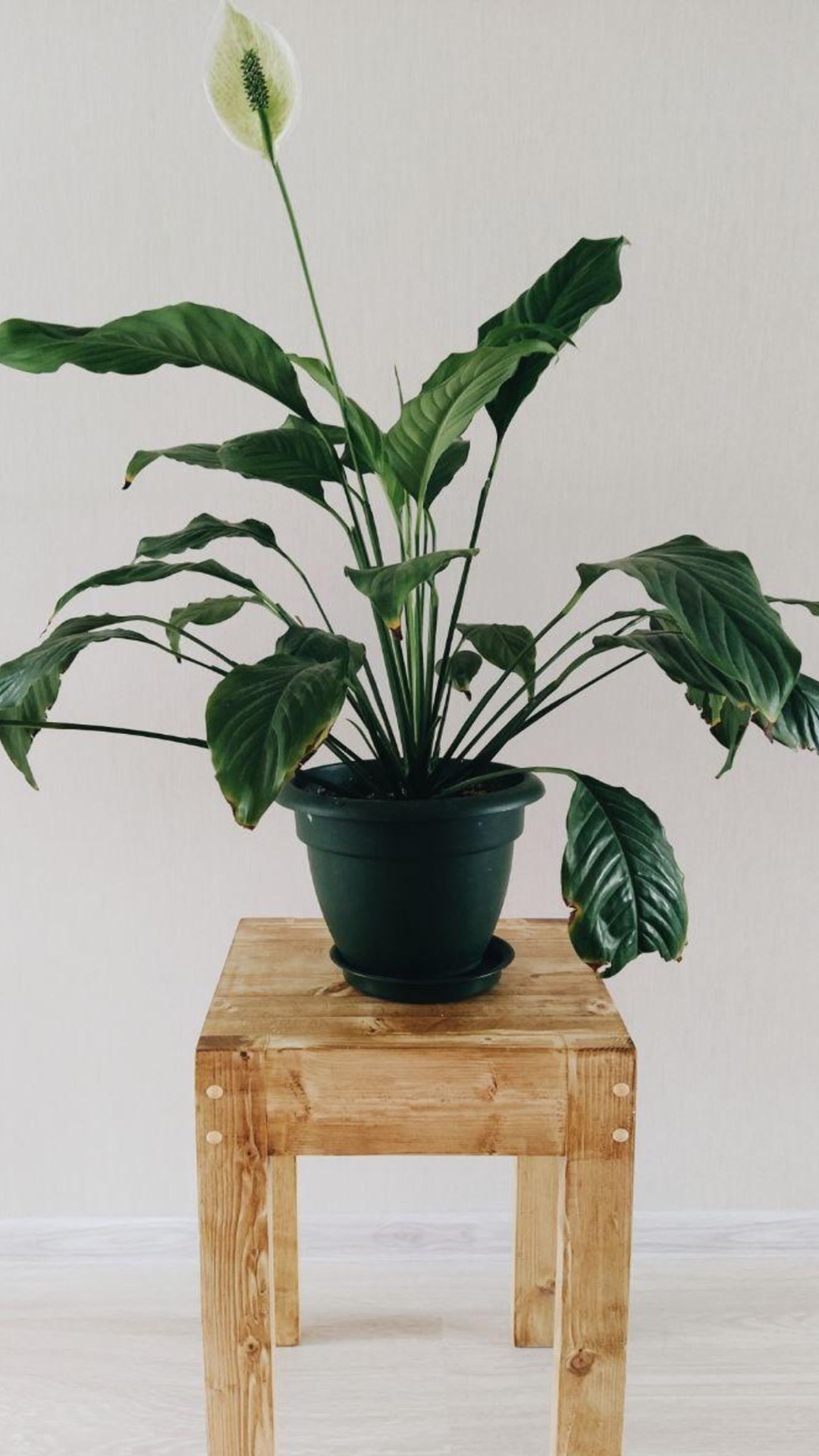 True to its name, this easygoing flowering plant symbolizes calm and healing. A Peace Lily can happily live in low light settings with partial shade and a once-a-week watering when the soil is dry. And keep an eye out for stunning white flowers when the conditions are right.
True to its name, this easygoing flowering plant symbolizes calm and healing. A Peace Lily can happily live in low light settings with partial shade and a once-a-week watering when the soil is dry. And keep an eye out for stunning white flowers when the conditions are right.
Helps remove: formaldehyde, benzene, xylene, trichloroethylene, and ammonia
Toxic for pets? Yes
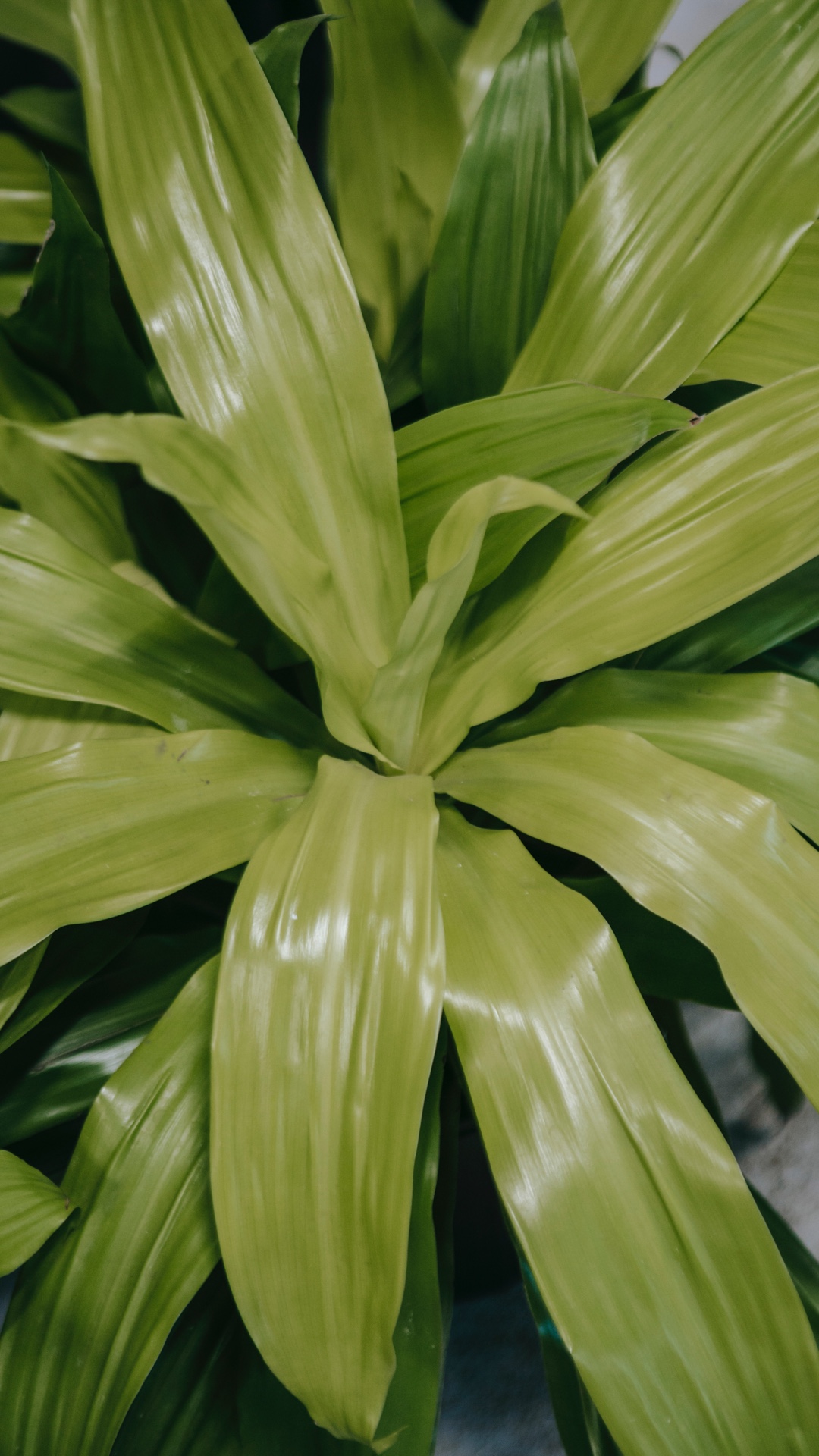 Resembling tropical grass, Dracaenas aren’t fussy. It prefers bright, indirect sunlight but can survive in low lighting and only needs water once a week. Known for its striped, spiky leaves, it can mature to be six feet tall.
Resembling tropical grass, Dracaenas aren’t fussy. It prefers bright, indirect sunlight but can survive in low lighting and only needs water once a week. Known for its striped, spiky leaves, it can mature to be six feet tall.
Helps remove: formaldehyde, benzene, xylene, toluene, and trichloroethylene
Toxic for pets? Yes
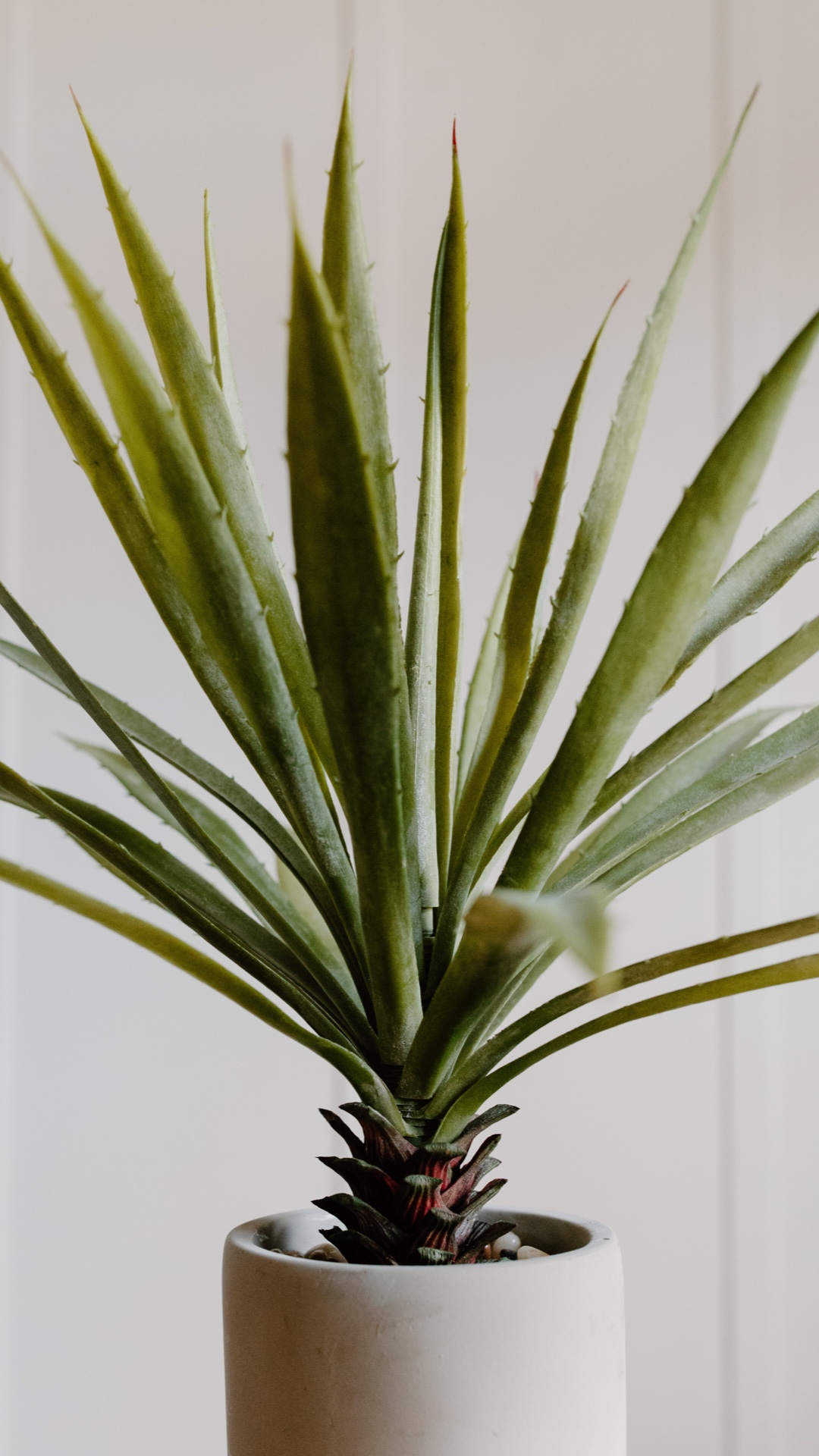 A tropical succulent loves bright indirect light, and Aloe Vera is borderline set it and forget it. Not for too long, of course. It does well in dry conditions and can be watered every two weeks to ensure its thick, juicy stems stay healthy. Oh, and the next time you have a small cut or burn, cut off a piece and squeeze out the insides to take advantage of its natural wound-healing properties.
A tropical succulent loves bright indirect light, and Aloe Vera is borderline set it and forget it. Not for too long, of course. It does well in dry conditions and can be watered every two weeks to ensure its thick, juicy stems stay healthy. Oh, and the next time you have a small cut or burn, cut off a piece and squeeze out the insides to take advantage of its natural wound-healing properties.
Helps remove: formaldehyde and benzene
Toxic for pets? Yes
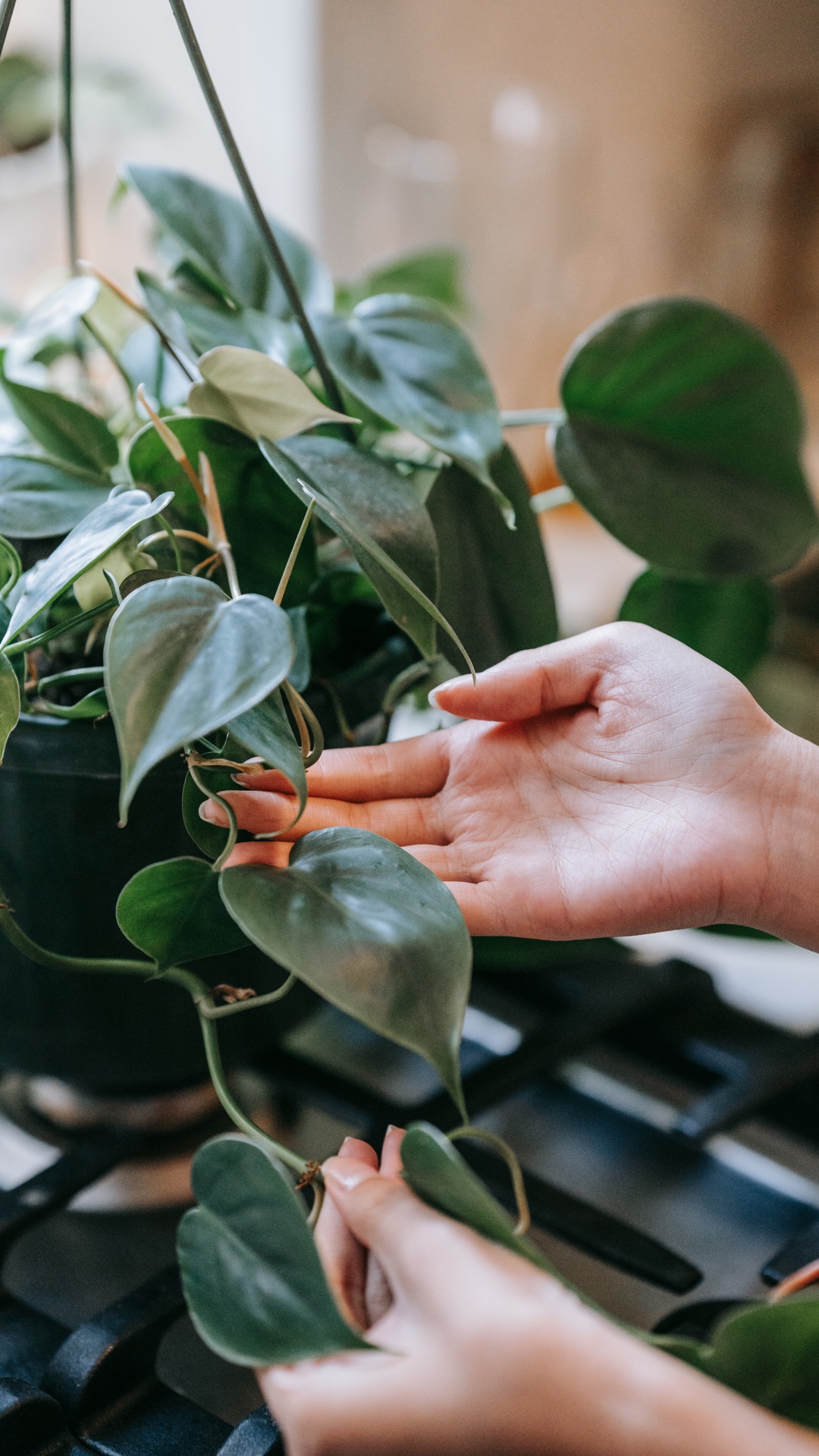 This plant loves to climb or lazily hang its long stems and sweetheart leaves wherever it can find a spot and will grow quickly in bright, indirect sunlight. Try hanging or shelving it high off the ground to accommodate its growth, and water it with lukewarm water when the soil dries out.
This plant loves to climb or lazily hang its long stems and sweetheart leaves wherever it can find a spot and will grow quickly in bright, indirect sunlight. Try hanging or shelving it high off the ground to accommodate its growth, and water it with lukewarm water when the soil dries out.
Helps remove: formaldehyde
Toxic for pets? Yes
Adopting a new plant during warmer months will be easiest for it to adjust to its new living environment. If you already have a green thumb, consider buying during the fall or winter, when plants are often at a discount.
Read more: How to Propagate Your Plants
Have feedback on our story? Email [email protected] to let us know what you think!

Shop Pillows
The Essential Organic Pillow Collection
Gentle, breathable, non-toxic support.




